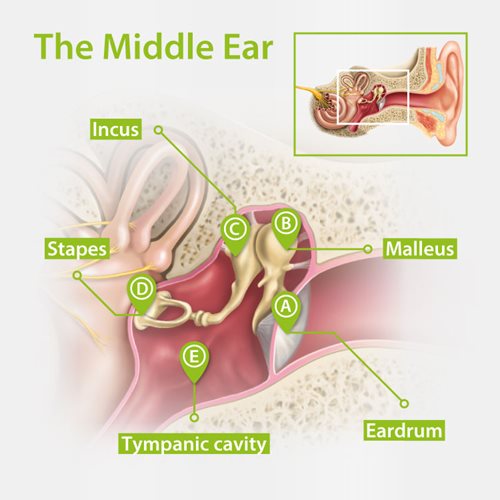
The area behind the ear drum is called the middle ear. The ear drum itself is a thin membrane that is hit by sound waves. From it, minute oscillations are conducted to three tiny little ossicles: Hammer, anvil and stirrup – the smallest bones in the human body. Thanks to their unique location, they are capable of amplifying oscillations 20-fold at this point, guaranteeing proper conduction to the inner ear. From the middle ear, the Eustach'ian tube extends to the nose and throat area. This tube ventilates the middle ear and equalizes pressure.